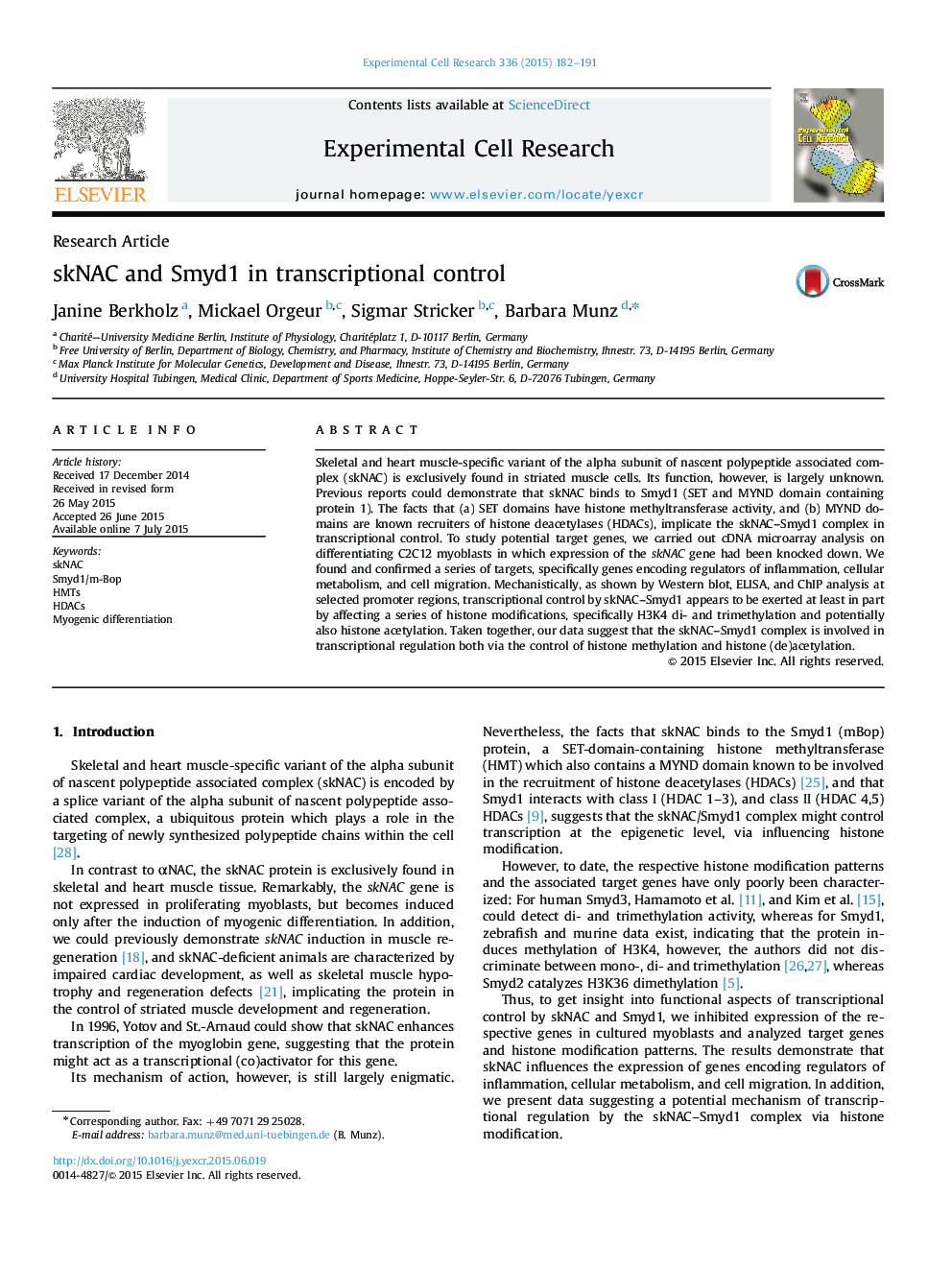| Article ID | Journal | Published Year | Pages | File Type |
|---|---|---|---|---|
| 2130164 | Experimental Cell Research | 2015 | 10 Pages |
•skNAC and Smyd1 are transcriptional regulators.•skNAC and Smyd1 promote H3K4 di- and trimethylation.•Smyd1 is an HDAC activator.•skNAC and Smyd1 might control transcription by influencing histone modification patterns.
Skeletal and heart muscle-specific variant of the alpha subunit of nascent polypeptide associated complex (skNAC) is exclusively found in striated muscle cells. Its function, however, is largely unknown. Previous reports could demonstrate that skNAC binds to Smyd1 (SET and MYND domain containing protein 1). The facts that (a) SET domains have histone methyltransferase activity, and (b) MYND domains are known recruiters of histone deacetylases (HDACs), implicate the skNAC–Smyd1 complex in transcriptional control. To study potential target genes, we carried out cDNA microarray analysis on differentiating C2C12 myoblasts in which expression of the skNAC gene had been knocked down. We found and confirmed a series of targets, specifically genes encoding regulators of inflammation, cellular metabolism, and cell migration. Mechanistically, as shown by Western blot, ELISA, and ChIP analysis at selected promoter regions, transcriptional control by skNAC–Smyd1 appears to be exerted at least in part by affecting a series of histone modifications, specifically H3K4 di- and trimethylation and potentially also histone acetylation. Taken together, our data suggest that the skNAC–Smyd1 complex is involved in transcriptional regulation both via the control of histone methylation and histone (de)acetylation.
